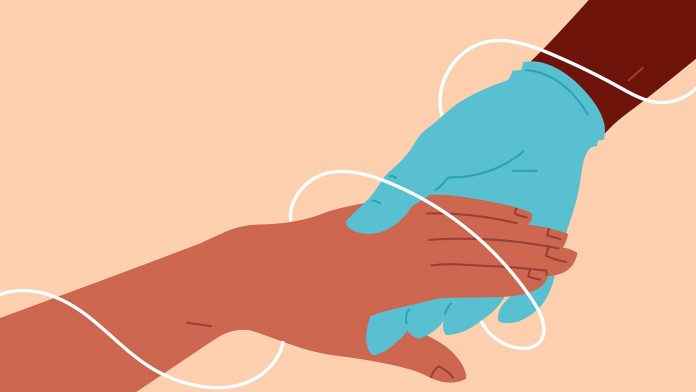
Committed to raising patient safety standards across healthcare, Dr Sven Staender discusses the complex challenges facing health systems when it comes to advocating a different approach to care.
Patient safety is defined as the avoidance of unintended harm to patients while they are receiving care. Although ensuring the highest levels of safety is a prerequisite for any healthcare facility, and an innate consideration for all those who enter into the medical profession, many complex factors can place patients at risk. Not only can patient safety incidents be a result of systematic challenges within the health system, but they can also be caused by wider issues beyond the healthcare environment, for instance, education and training systems that do not suitably promote and teach the value of safety to medical students.
Dr Sven Staender is all too familiar with the increasing complexity and challenges of addressing patient safety in healthcare. Having realised early on how integral training, communication and teamwork are in the prevention of patient harm, he helped to develop a critical incident reporting system to study errors occurring in anaesthesiology as well as the Helsinki Declaration on Patient Safety in Anaesthesiology. He later helped launch and became president of the European Patient Safety Foundation which is a platform for promoting best practices and knowledge sharing to improve safety. Lorna Rothery spoke to him about his efforts to drive awareness of patient safety in the medical profession and key steps that need to be taken to help raise safety standards across healthcare.
To begin, can you tell me what led you to become interested in the issue of patient safety and engage in the leadership of the European Patient Safety Foundation?
I have been engaged in this topic for almost 30 years. It all started when I began my medical training working in the Department of Anaesthesiology at the University Hospital in Basel. From early on in my career, I realised that patient safety or the safety of our processes in anaesthesiology, while being influenced by technical issues and pharmacological issues, did not really consider human factors. Myself and colleagues began to realise that real progress in patient safety would only be possible when we focus on the aspects of teamwork and collaboration; good communication between healthcare workers is especially important when you are working in an environment where human limitations can contribute to preventable harm.
We developed a patient simulator with psychologists from the University of Texas, the first in healthcare, and replicated surgical settings in the operating room together with surgeons and anesthesiologists. At the same time, we were in contact with the Swiss national airline, then called Swiss Air, because aviation has a long-standing history of dealing with all these aspects of safety and risk management.
I was later involved in the development of a critical incident reporting system as a tool to discuss and address critical incidents that could potentially happen in the operating room. These near misses present huge learning potential and a chance to improve conditions that could be harmful to the patient. The creation of the critical incident reporting system was really the starting point for my patient safety journey. Since then, I have been on the scientific board of patient safety at the European Society of Anaesthesiology, supported the creation of the Helsinki Declaration on Patient Safety in Anaesthesiology and then the launch and early work of the European Patient Safety Foundation, where I was on the advisory board before becoming president.

You can be an expert in your field but without good communication and teamwork, it accounts for very little in the context of patient safety
Do you think the concept of patient safety is sufficiently known, mastered and implemented in most healthcare institutions in Europe?
There are differences across Europe in the way countries approach patient safety. When I look at my own country, Switzerland, we have very limited activities when it comes to teaching on patient safety; I can say that because I run a course in the medical school at the University of Zurich where I teach 24 medical students per year out of a total of 400. It is only a fraction of medical students who are systematically learning about patient safety at medical school. Equally, after medical school, there is no necessity or regulation to learn more about patient safety at all. It is an odd situation since, as a medical doctor, I must complete radiation safety courses every two years, and yet the same does not apply to patient safety despite the scale of errors or mistakes made in hospitals due to human error. The role of human factors in patient safety is not being addressed systematically as it should be.
There is some progress, however, at least in Switzerland where from next year it plans to incorporate patient safety into the education of young doctors before they become specialised.
Patient safety should of course be prioritised across healthcare, but are there any areas in particular where you feel greater attention is needed?
Overall, I do not think the aspect of patient safety should be limited to certain specialities, it must be suitably considered even in rural settings and by private practice doctors. There is, however, a difference between specialities when it comes to the dynamics of healthcare; so, for instance, the pace and demands are different for those caring for the elderly compared to an emergency room or intensive care unit. Dynamics play a role, but the topic of patient safety, overall, is important in all aspects of healthcare.
What resources/people should be mobilised to drive improvements in safety?
Firstly, the difficulty we face is that medical professionals in many specialities believe that simply adhering to their training and having knowledge in their field is sufficient for understanding all aspects of health and safety. We need the concept of patient safety to be more visible and considered; it is limited to think safety risks and mistakes are simply a reflection of one’s own competencies. When it comes to hospitals, but also private settings, most of the time it is communication and teamwork that make the biggest difference and not a matter of how well you are trained. At the end of the day, you must work in teams; you can be an expert in your field but without good communication and teamwork, it accounts for very little in the context of patient safety.
Funding is another issue that needs to be addressed so that we can provide medical students with the knowledge and training needed to support patient safety interventions. When I approach the dean of my university about extended activities to teach patient safety, I am often told that the curriculum is already full and if I want to have an additional course another course needs to be dropped. Funding for major healthcare issues like diabetes, coronary artery disease or oncology has huge amounts of financial support, but funding for patient safety, team training or simulation has next to nothing. This makes a huge difference when it comes to the implementation of educational activities.
In an ideal future, how would you see a hospital organising itself to meet patient safety requirements and achieve the best quality of care?
The future hospital would definitely pay attention to working conditions, ensuring that healthcare workers are comfortable and compensated to enable them to deliver safe healthcare. This would not only involve looking after their wellbeing at work but providing them with education, and training – not only training on facts and figures but on teamwork and communication. We need to train people to be smart enough to work in teams.
We need hospitals where good patient outcomes do not equate to exhausted healthcare staff, and this is a question of resources. Already, we are seeing healthcare staff spread far too thinly and this is going to be a huge challenge for the healthcare system in the coming years.
In previous decades, the main strategy to deal with risk and safety was to increase standardisation. The number of guidelines published up until today is overwhelming, but this leaves out the fact that modern healthcare is a complex system, and we cannot deal with complexity by only following guidelines. As part of our efforts to increase safety, we need specialists to deal with situations where there is no standard or guideline, it is a question of resilience. Simply following rules will not accommodate the complexity and challenges of modern healthcare.
PD Dr med Sven Staender
Past President
European Patient Safety Foundation
http://www.eupsf.org
This article is from issue 24 of Health Europa Quarterly. Click here to get your free subscription today.









